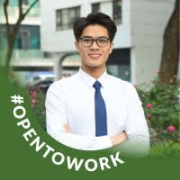

FlexPod XCS and HPE Hyper Converged are advanced data center solutions. FlexPod XCS appears to have the upper hand due to better pricing and support, while HPE Hyper Converged is noted for superior features and management.
Features: FlexPod XCS offers robust hardware integration, exceptional performance, and scalability. HPE Hyper Converged provides simplified management, flexibility, and a comprehensive solution set.
Room for Improvement: FlexPod XCS needs better software updates, more intuitive management tools, and enhanced analytics. HPE Hyper Converged requires improved analytical capabilities, more streamlined support, and stronger software updates.
Ease of Deployment and Customer Service: FlexPod XCS is known for straightforward deployment and mixed support reviews. HPE Hyper Converged offers quick deployment and responsive customer service.
Pricing and ROI: FlexPod XCS is competitively priced with a good ROI. HPE Hyper Converged, although more expensive, offers significant value in terms of features and ROI.
| Product | Market Share (%) |
|---|---|
| FlexPod XCS | 10.3% |
| HPE ConvergedSystem | 16.6% |
| Oracle Private Cloud Appliance | 14.2% |
| Other | 58.9% |
| Product | Market Share (%) |
|---|---|
| HPE Hyper Converged | 3.1% |
| VxRail | 15.8% |
| VMware vSAN | 13.9% |
| Other | 67.19999999999999% |


| Company Size | Count |
|---|---|
| Small Business | 34 |
| Midsize Enterprise | 66 |
| Large Enterprise | 182 |
| Company Size | Count |
|---|---|
| Small Business | 18 |
| Midsize Enterprise | 6 |
| Large Enterprise | 18 |
FlexPod XCS is the secure platform your applications need from edge to cloud. Easily manage your suite of cloud-native, edge, and enterprise apps. Integrate advanced cloud services without compromising performance, security, reliability, or scale.
HPE Hyper Converged solutions combine intuitive software with the reliability of a world class platform to deliver cloud-like simplicity to your business.
Now, IT can become an internal service provider to end-users by quickly delivering the resources they need for application development and consumption. With HPE Hyper Converged systems companies can operate with cloud efficiency to simplify IT operations with one comprehensive control panel to deploy, monitor, analyze and update – with a single generalist; consume with cloud flexibility to deliver a cloud-like experience, with multi-tenant workspaces that eliminate stranded resources and flexes on demand; and deploy at cloud speed to empower developers and lines-of-business with a self-service portal that can instantly compose and recompose VMs in minutes. Built-in enterprise grade features, such as performance and resiliency enable HPE Hyper Converged systems to easily handle a wide variety of virtualized workloads, including general purpose virtualization, virtual desktop infrastructure (VDI), and cloud.
We monitor all Converged Infrastructure reviews to prevent fraudulent reviews and keep review quality high. We do not post reviews by company employees or direct competitors. We validate each review for authenticity via cross-reference with LinkedIn, and personal follow-up with the reviewer when necessary.